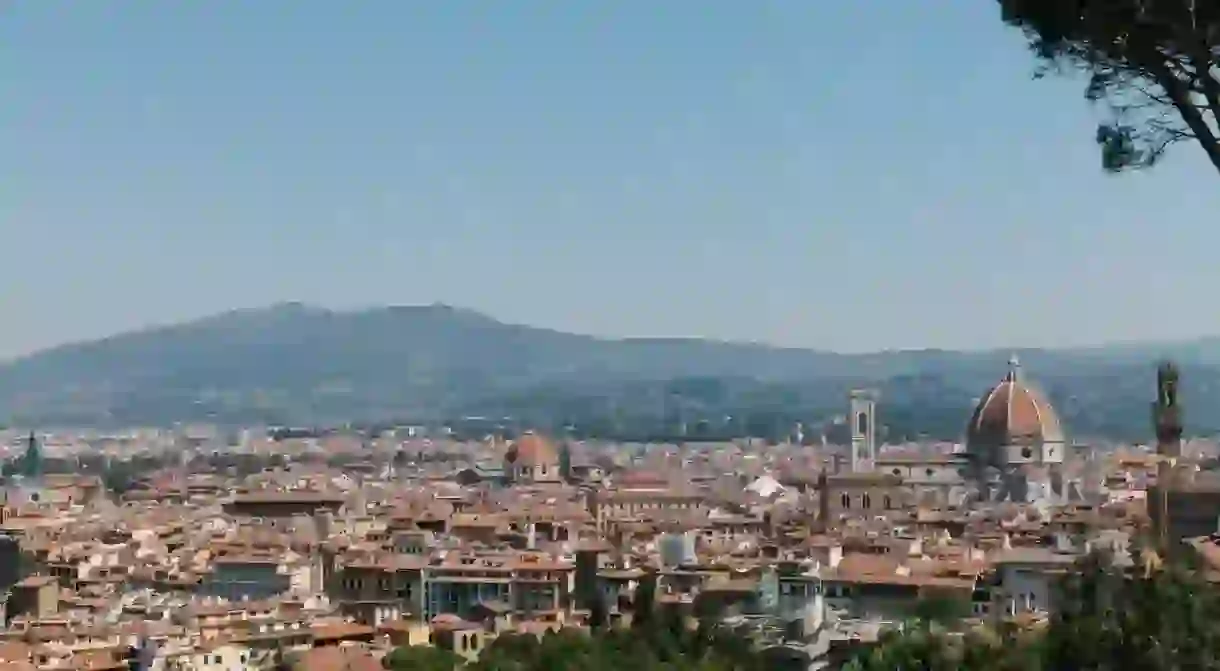These Breathtaking Buildings Show the Best of Florence Architecture

Florentine architecture is lauded throughout the world, and the city is something of a living museum, filled with majestic buildings, medieval palaces and impressive monuments – but there’s nothing dusty or old-fashioned about the picturesque capital of Tuscany.
With so many architectural marvels to take in, it can be hard to know where to begin. Travel journalist Francesca Masotti’s curated list of Florence‘s most impressive buildings will help guide you through the ancient streets of the Italian metropolis.
Cathedral of Santa Maria del Fiore
Cathedral, Church

Capped by Filippo Brunelleschi’s red cupola, Santa Maria del Fiore is among the city’s most iconic and breathtaking landmarks. One of the biggest churches in the world, it contains the best of Gothic-Renaissance architecture. Italian sculptor and architect Arnolfo di Cambio designed it at the end of the 13th century, but the dome wasn’t added until the 15th century. The church façade features pink, green and white marble that complements the 14th-century bell tower. Inside, you’ll find mosaic pavements and frescoes, such as the Last Judgment by Giorgio Vasari. Climb to the top of the cupola for dazzling views.
Palazzo Vecchio
Building, Museum, Historical Landmark

Palazzo Vecchio is a Romanesque building with many Gothic elements. Completed in 1302 as the seat of Florentine government, it eventually served as the Medici family palace, but has since been returned to its original purpose. As such, only portions of the building are open to the public, but inside you’ll find courtyards, salons, artworks and stunning chambers. Arguably the most imposing chamber is Salone dei Cinquecento, built in 1495 by the Florentine architect Simone del Pollaiolo and a popular location for wedding celebrations.
Villa Bardini
Art Gallery, Museum

If you want to visit a place off the beaten path, Villa Bardini is the perfect location. The 17th-century villa is reminiscent of the city’s “Casini di Delizia”, buildings created for leisure that were meant to be both productive and ornamental. As well as its clean, beautiful architecture, Villa Bardini is worth visiting for its gorgeous garden that consists of an Italianate garden, an English wood and an agricultural park, and offers a wonderful view of the city. Together, the house and garden give visitors a unique insight into Florence’s history and style. Villa Bardini also has a museum dedicated to artist Pietro Annigoni, as well as an exhibition centre.
Ponte Vecchio
Bridge

Ponte Vecchio, or Old Bridge, is a wonderful closed-spandrel arch bridge that crosses the river Arno at its narrowest point. It’s believed to be the first bridge built in the Roman Empire but is first mentioned in the year 996. Originally constructed in wood, the bridge was destroyed in the flood of 1333 and rebuilt in stone. The hidden path along the top, the Corridoio Vasariano, was used by the Medici to cross the city without exposing themselves to the public. Ponte Vecchio is also famous for being the only bridge in Florence not destroyed during World War II, and for its fancy jewellery shops.
Uffizi Gallery
Museum, Art Gallery

Despite the crowds, you can’t miss the Uffizi Gallery. Florence’s most iconic museum, and one of Italy’s most celebrated art galleries, is housed in what was originally the Medici’s administrative centre. If you’re new to Florence, make sure you set aside enough time for your visit – its works by some of the most important artists in the world, such as Michelangelo, Raphael, Titian and Botticelli, will keep you occupied for hours. The building itself is a piece of art that offers great views over Ponte Vecchio and the river Arno.
Giotto's Campanile
Building, Cathedral

The Campanile, or bell tower, is made of pink, white and green marble and is a splendid example of Florentine Gothic architecture. Construction began in 1334 by Giotto, but despite its name, the architect only actually worked on it for three years before his death. Andrea Pisano picked up where he left off and finished the first two floors, and Francesco Talenti then completed it in 1359. The decorations and statues on the façade are extremely rich in details, and the top of the tower offers a stunning view of Florence.
Pitti Palace, Piazza de' Pitti
Museum

Palazzo Pitti is one of Florence’s largest architectural monuments and was designed by Filippo Brunelleschi for the family it was named for. In 1549, the property was sold to the Medici family, and later became the primary residence of the Grand Ducal family. Today, Palazzo Pitti houses multiple museums. On the first floor is the Palatine Gallery, which contains a broad collection of paintings from the 16th and 17th centuries, and the Royal Apartments with furnishings from the 19th century. On the ground floor, the Treasury of the Grand Dukes (formerly known as the Silver Museum) hosts a vast collection of Medici household treasures. The Gallery of Modern Art is on the top floor, as is the Museum of Costume and Fashion.
Additional reporting by Cajsa Carlson.













